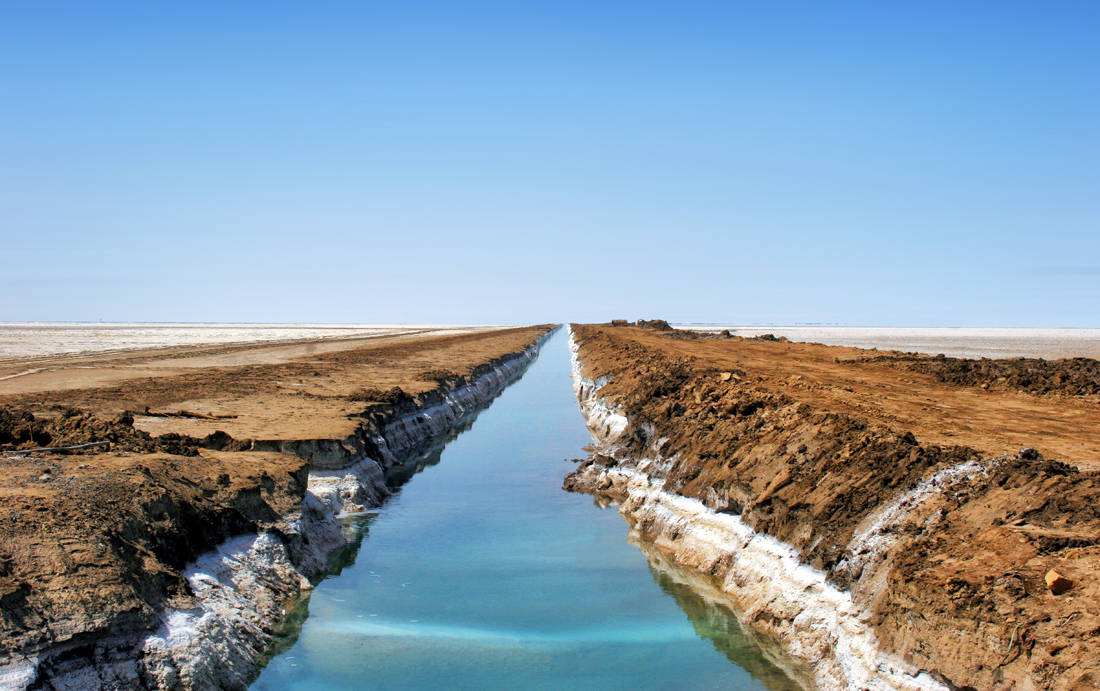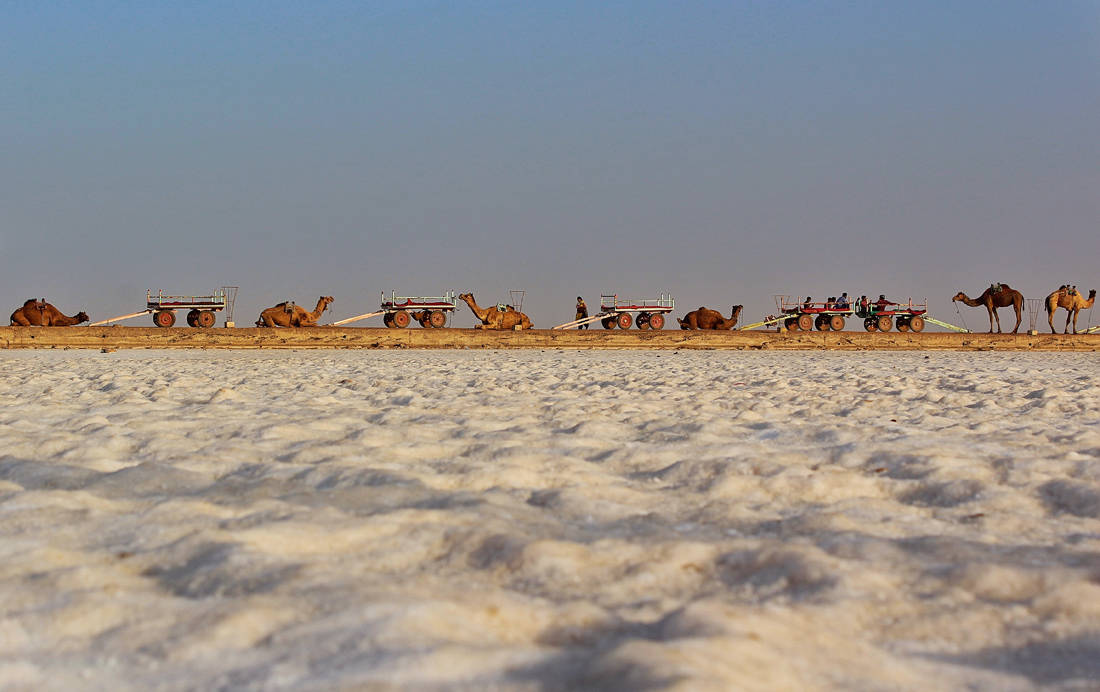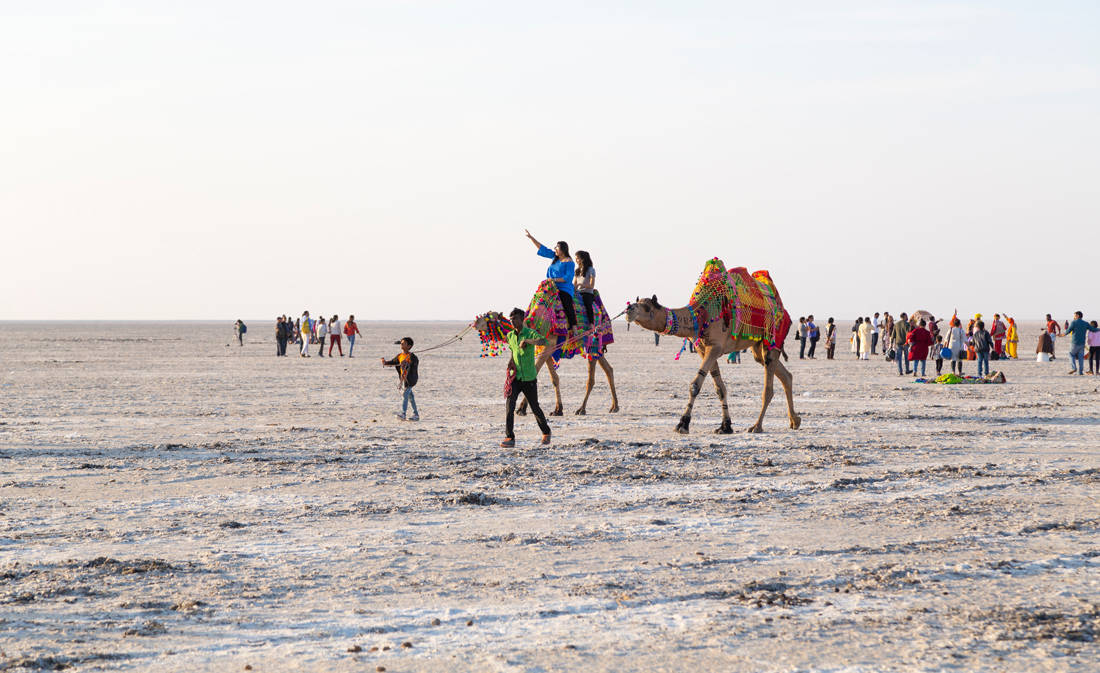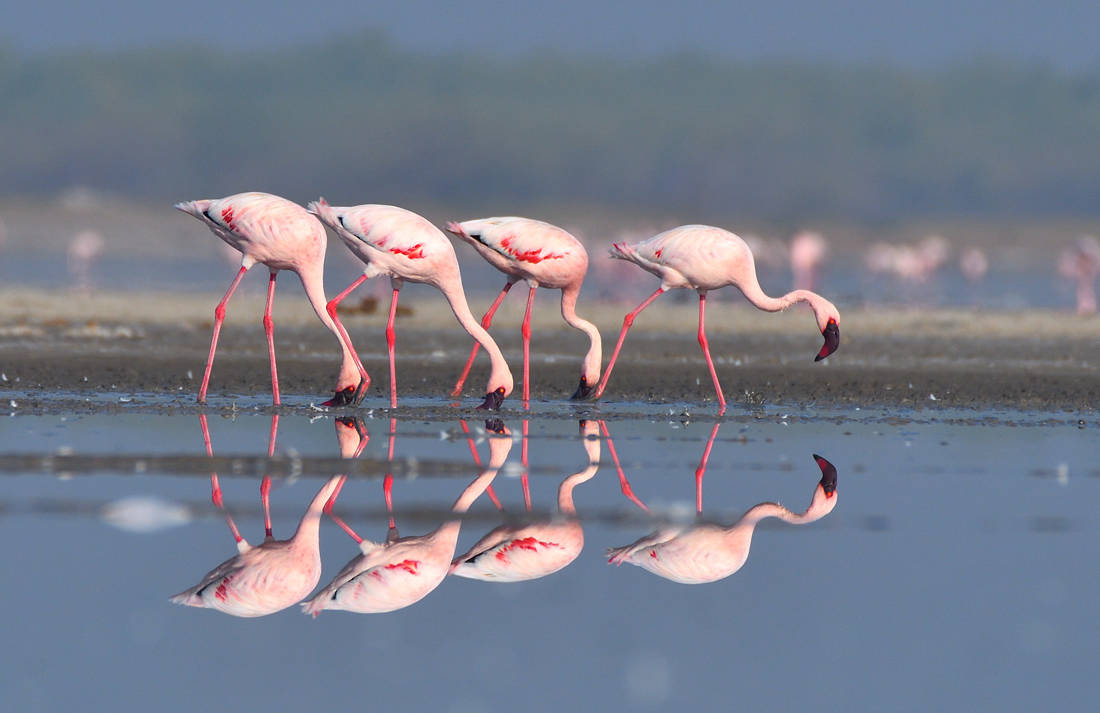For most of the year, one of the largest salt flats in the world is a huge white desert. And the rest of the time it disappears completely.
About one hundred kilometers from the Arabian Sea, in the state of Gujarat, to the west India, a vast expanse of snowflakes, resembling snowflakes, compose the surreal landscape of the impressive salt marsh that reaches north to the border of India with Pakistan. Known as the Rann of Kutch, this area is divided into two parts: the Great Rann, which covers 19.000 square meters, and the Little Rann, which consists of about 5.000 square kilometers.
Together these two areas form one of the largest saline deserts in the world and provide 75% of the total amount of salt produced in India.
However, for many months, every summer, as the area is flooded by monsoon rains, the salty land disappears and transforms into a glowing enclosed sea, shining dazzlingly under the hot sun.

The two Rann are located between the Gulf of Kutch, on the western border of India, and the Indus River Delta in southern Pakistan. The Great Rann, located 100 kilometers northeast of Bhuj, is often referred to as the Endless White έρημος»Of India and has a very limited life. Little Rann, located southeast of the Great Rann to which it is connected, has become a haven for migratory birds and wildlife. And yet, these two areas share much in common.
Towards the end of June, monsoon rains fall on the two Ranns, flooding the area until October, when the water gradually begins to evaporate. As the water recedes, seasonal salt workers set up their "workshops" to collect the salt crystals left behind by the steaming water. From winter until next June, when the rains return, the workers collect as much salt as they can.
"The white desert is so flat that you see the horizon, like when you see the sea, but without the water and the waves," describes a local guide.

The geological roots of the Rann of Kutch go back more than 200 million years, to the pre-Jurassic and Jurassic periods. Until a few hundred years ago, the area was a sea route through which ships entered the Gulf of Kutch and sailed north into the Indus River. The culture of the Indus Valley, one of the first greats in the world, flourished in this area from 3300 to 1300 BC. However, the huge earthquakes recorded at this point changed the topography of the area. The tremors caused the ground to rise, creating many cracks that filled with seawater and formed a "ridge" 90 kilometers long and three meters high, which blocked this once navigable route from the Arabian Sea. These events caused the trapping of the salty water in the desert and created the unique topography of Rann.
"We found the hull of a ship in the desert, which was isolated during the earthquakes and was blocked there, not being able to reach the sea. It was such an amazing image: a wooden carcass in the middle of nowhere, ”describes Dr. MG Thakkar, a geologist at Krantiguru Shyamji Krishna Verma Kachchh University.

Over the past 200 years, salt collection has become a huge industry in Ranns. Many of the seasonal workers in the area in October come from nearby Surendranagar or belong to the Kohli and Agyariya ethnic communities. The salt collection in Ranns continues unabated until June and the workers work in harsh conditions and at very high temperatures - some of the highest in the country.
As the rains subside in October and November, workers begin the harvesting process by digging the soil and pumping groundwater. The water is "divided" into improvised square "laboratories", depending on the desired salinity. It may take up to two months for the water to evaporate and then the workers plow the soil ten to twelve times a day, by hand, leaving only pure untreated salt.
"We are the 5th generation of the family that deals with salt harvesting. "Every year, for nine months, we bring our whole family here and return home during the rainy season," says worker Rasikbhai Kalubhai.

In addition to Rann's bizarre landscape, the desert is home to unique architectural creations, the so-called bunga houses. For centuries, many of the nomadic communities and tribes that lived in the area remained in these cylindrical mud huts with conical roofs. Although the exterior is often decorated with patterns, these marvels of engineering, according to the BBC, are designed to withstand stormy winds, frequent earthquakes that continue to shake the area and extreme temperatures - reaching 45 degrees in summer. and approach the frost in winter.

In recent years, Rann has become a major tourist attraction. People from all over the world flock here to see the salty deserts of India. They usually arrive during the dry all-white winters, by camels or by jeep safari. One of the main attractions is the sunrise and sunset in this surreal landscape. Other visitors plan their visits here during the full moon, enjoying the vast desert under the moonlit sky.

In an effort to boost tourism, the state of Gujarat is funding local small-scale home textile businesses. The creations of the many nomadic communities living in the Kutch area are recognized throughout the country. Many types of fabrics produced in Rann are items that are no longer made elsewhere. The local government presents these creations at the annual Rann Festival, which includes music, dance, crafts and local culture.

Extreme rains, heat and floods in Rann have created a unique ecosystem, suitable for many species of flora and fauna. During the winter months, from October to March, flocks of migratory birds make the Little Rann their home. Eagles, storks, cranes and certainly the most famous winged "inhabitants", the flamingos.
Little Rann is also one of the last habitats of the Asian wild donkey, which is an endangered species. Also found in the area are desert foxes, Indian blue bulls and Indian gazelles, the chinkara.

With unbearable heat waves, floods from rainwater and endless icy winters, Rann remains a geological wonder in its infancy.
The area attracts ecologists and geologists who want to study how such an extreme and seemingly inhospitable soil can attract so much life and extract so much salt from such barren land. As the rains return, so do the birds and the people, who still turn on this dazzling canvas of nature, which combines its all-white image with the vast horizon, composing this rare natural wonder.
